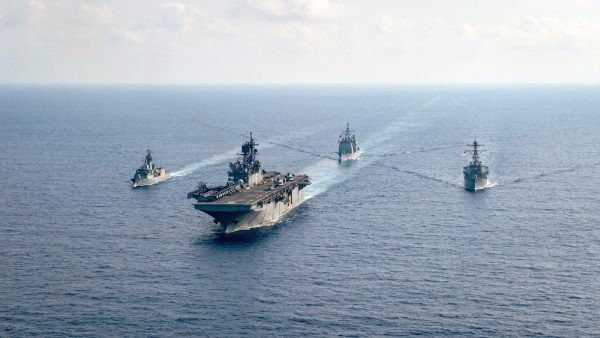The statement was made through the Secretary-General to the Commission on the Limits of the Continental Shelf (CLCS). Since the Commission began reviewing continental shelf submissions in 2001 there have been many such diplomatic exchanges. They have become a normal part of the process through which states formally assert diplomatic and legal positions arising from CLCS submissions under the 1982 UN Convention on the Law of the Sea (UNCLOS). Those positions can relate to both territorial and maritime disputes, and interpretations of UNCLOS.
That the CLCS is a scientific and technical body without legal competence has become irrelevant to these exchanges becoming a forum in which political and legal positions are asserted. One of the most significant diplomatic exchanges was sparked by the 2009 joint Malaysian and Vietnamese CLCS submission resulting in a Chinese note verbale with an accompanying map showing China’s nine-dash line. But it is Malaysia’s December 2019 CLCS submission addressing its continental shelf claim in the northern part of the South China Sea that resulted in the most recent flurry of 11 diplomatic exchanges.
China, Indonesia, the Philippines, Vietnam and the United States, in addition to Australia, have now all responded. While Australia’s statement is technically a response to the Malaysian CLCS submission, it directly addresses five Chinese notes from December 2019, and March, April and June 2020.
Australia’s statement is principally framed upon a legal interpretation of UNCLOS, with particular reference to the 2016 South China Sea arbitral award between the Philippines and China, and China’s subsequent practice and behaviour. In that respect the statement focusses on China’s regional maritime claims and only marginally addresses territorial issues. Still, Australia makes two points in that regard.
First, Australia rejects China’s assertion in its 17 April 2020 note that its sovereignty claims over the Paracel and Spratly Islands are ‘widely recognised by the international community’. Australia is making clear that it does not recognise the claims of China or any other states to these islands and that they remain a matter of dispute. In this respect, there has been no change to Australia’s longstanding position on the disputed status of the islands.
Second, Australia also makes clear that China’s position that it exercises sovereignty over low-tide elevations is a matter of ‘strong concern’ as claims to such features are incompatible with international law because they do not form the land territory of a state.
Of greater significance is Australia’s position with respect to China’s maritime claims. Consistent with the South China Sea arbitration award, Australia rejects China’s ‘historic rights’ argument as inconsistent with UNCLOS. Australia also makes clear its position with respect to China’s attempt to draw either UNCLOS Article 7 or Article 47 baselines around its claimed South China Sea islands.
Here the Australian position is consistent with UNCLOS, which limits the drawing of Article 7 straight baselines to instances where a coastline is deeply indented, cut into or where there are offshore fringing islands. Likewise, any attempt by China to draw Article 47 archipelagic baselines is also challenged by Australia on the grounds that China is not an archipelagic state as defined in Article 46.
As a result, Australia rejects China’s attempts to claim a range of maritime entitlements such as an exclusive economic zone or continental shelf from these baselines. Australia also rejects equivalent Chinese maritime claims from submerged maritime features or low-tide elevations that have been artificially transformed by land building and associated activities. While Article 60 of UNCLOS does provide for the building of artificial islands, such features do not generate any distinctive maritime entitlement akin to a naturally formed island as recognised under Article 121.
Australia’s statement has sought to reinforce some of the fundamentals of UNCLOS which both Australia and China are parties to. The interpretations Australia has put forward conform with those adopted in the unanimous decision of the South China Sea arbitration, which Australia reminds China is final and binding. Some aspects of China’s South China Sea claims find support in state practice, but that practice is not sufficiently widespread nor representative of the international community to in any way be construed as newly developed international law.
What is most significant about the statement is that it was made in the context of disputes where Australia has no direct interest. Australia’s position then is one of seeking to make a clear statement on its interpretation of the law of the sea, which in turn may place a halt upon the development of state practice contrary to UNCLOS. It also makes clear Australia’s position with respect to some critical ongoing legal issues in the South China Sea arising from China’s actions.
Donald R Rothwell is Professor of International Law at the College of Law, The Australian National University. He is co-author of The International Law of the Sea (2nd ed., Bloomsbury, 2016).

